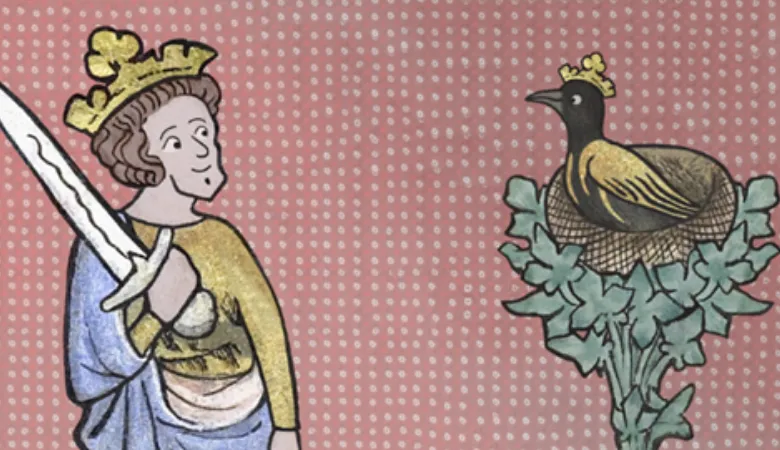Liturgical and literary landscapes: the cult of St Oswald of Northumbria in the German-speaking world

Around a dozen settlements in the German-speaking alps are named after a seventh-century Northumbrian saint-king and many of the hamlets and villages called ‘Sankt Oswald’ use a raven holding a ring as their symbol. This project will explore how and why an early-medieval English king came to be so important in the medieval German Empire, that his very name came to be inscribed into the landscape; why he is associated with a raven in vernacular legends; and the role his loquacious avian companion played in embedding his presence in high-altitude settlements.
Although the popularity of Oswald in the German-speaking world has long been recognised, disciplinary divisions have meant that historical and liturgical evidence for Oswald’s cult in the region have been studied in isolation from popular vernacular stories about the saint. Yet it is clear that literary and liturgical manifestations of Oswald interacted in powerful ways and the raven is often found in liturgical settings: in the mid-C20th, near the small settlement of Sauris (Zahre) in the remote Carnian alps, villagers still processed through alpine pastures on his feast day, carrying a thumb relic and an effigy of the Northumbrian king with a raven perched on his shoulder. Through close collaboration between an historian and a literary scholar, this project will uncover how Oswald’s presence in the German-speaking alps both shaped the cultural landscape of alpine regions and also how his legend and veneration of him in turn influenced the topography of his cult in southern Germany and Austria.
Alongside our research activities, the project includes a generous budget for public facing activities and events, which will be developed with creative practitioners in collaboration with Peterborough Cathedral, a former abbey where Oswald was a particularly important saint thanks to the monks’ possession of the most famous relic associated with him: his incorrupt right arm. Additionally, we will work with a group of schools in the Peterborough area to develop German-language teaching resources for KS3 based on the story of Oswald’s raven, thereby supporting the teaching and learning of German in the UK.
Our Partners

University College London
Principal Investigator
Investigator
Affiliations
Project websites
Funding
Funding Body: Arts & Humanities Research Council (AHRC)
Amount: £248,718
Period: January 2023 - December 2024


